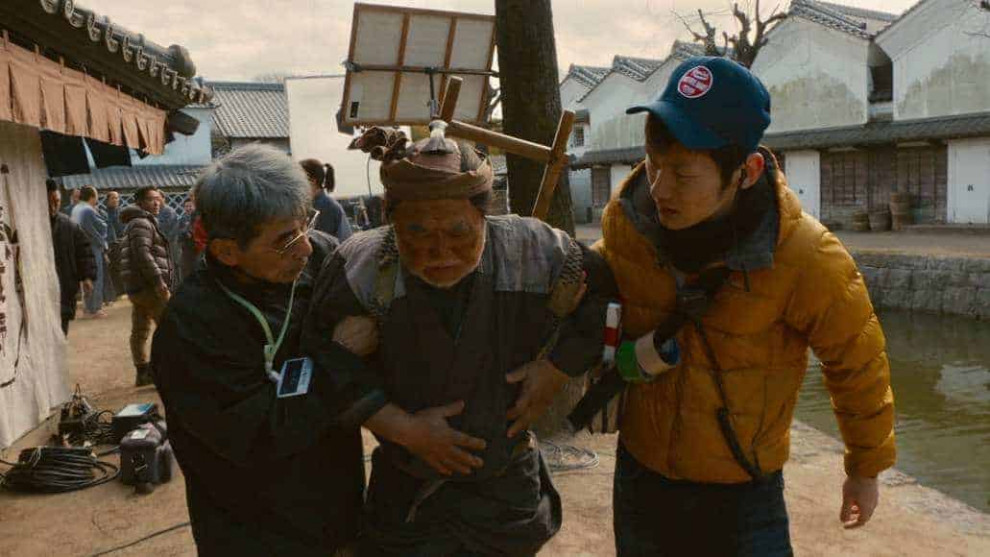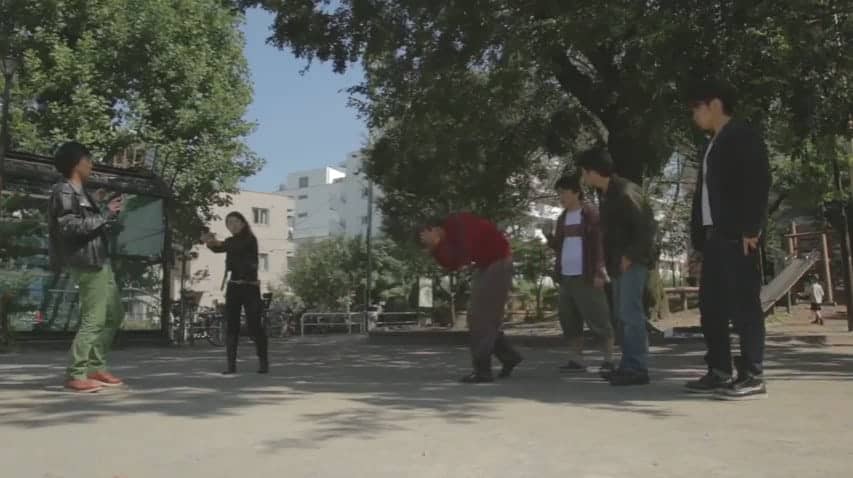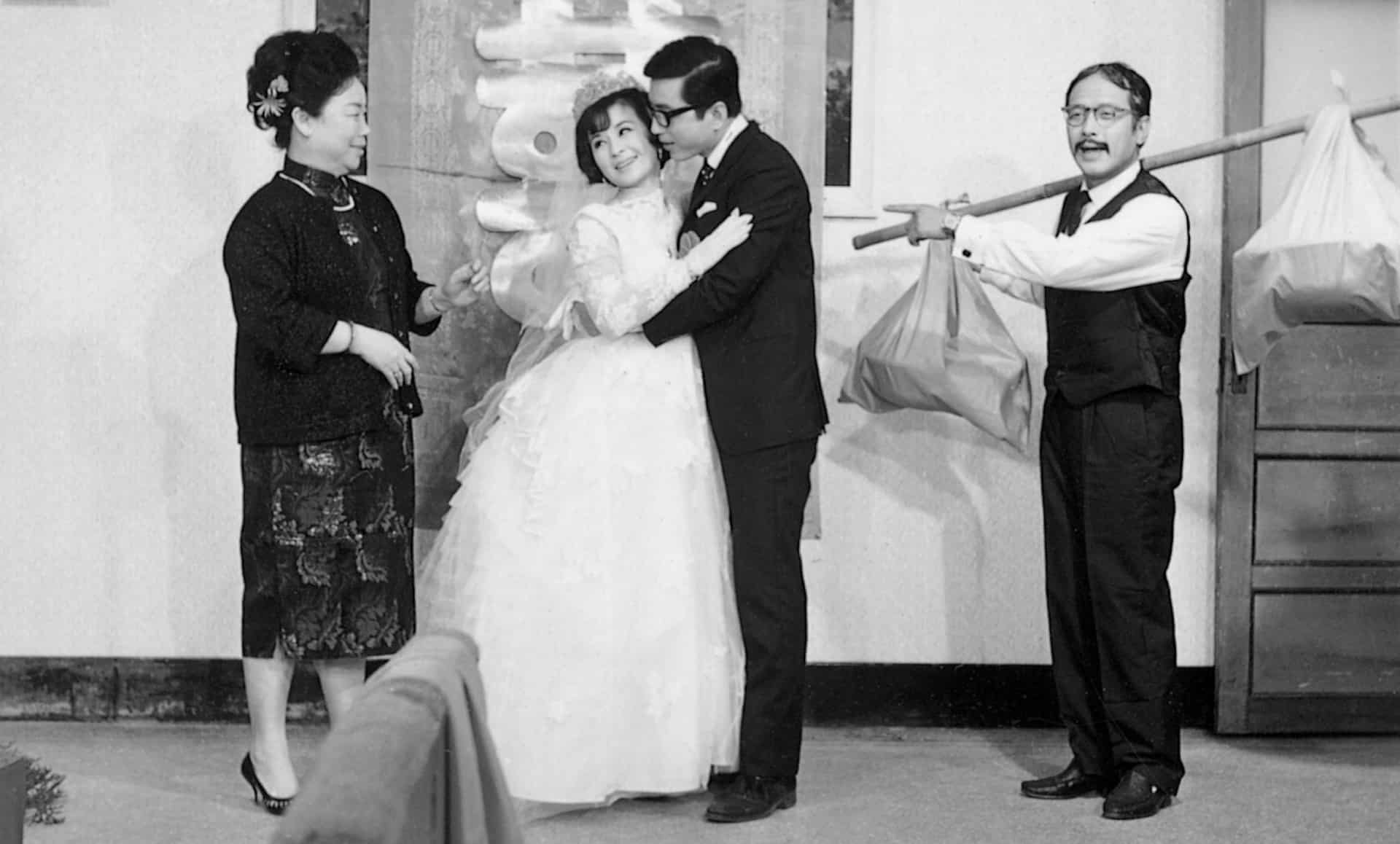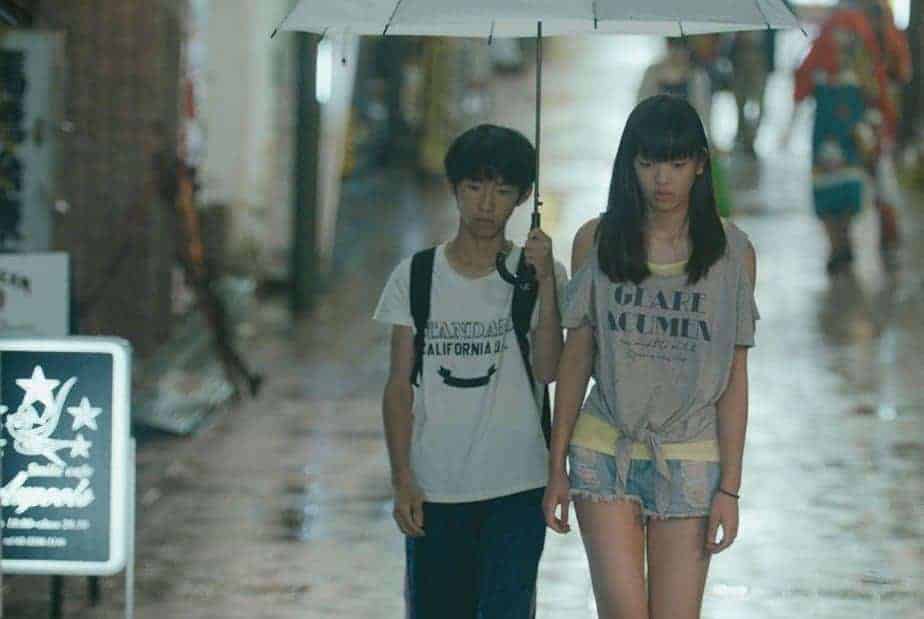A loud anko-ru! goes to the Japanese director Naoki Murahashi for his quick-witted mockumentary “Extro” that has just had its European premiere at the 23rd edition of PÖFF (Tallinn Black Nights Film Festival), in the Rebels with a Cause festival section.

By putting the film extra(s) in focus of his story, Murahashi is placing the real-life stars in the shadow of his true leads – those who remain, if not invisible, then silent in movies, but who contribute to the atmosphere and the plot-building of films. The temptation of using the actual dialogues and the fake information strewn across the film to write a review of “Extro” is too big, and it is particularly difficult to ignore the lines spoken by the true Japanese hotshots Koji Yamamoto (“It is perhaps, we are allowed to act in a place that belongs to them”), Yasufumi Terawaki and Yuki Saito. But it is the singer-songwriter Tatsuya Ishii who delivers the most epic monologue in the movie by reciting a haiku written by his alleged school-friend and the titular character of the movie Kozo Haginoya. The hilarious verses he claims had served him as inspiration for “Funk Fujiyama” – “spring approaches/ everybody samurai/ sushi geisha”, is a poetry that makes as much sense as “Extro”'s plot, whose strength lies in the filigree mockery of the film trade and its self-importance.
The elements of thriller have also penetrated “Extro”, making it a notch crazier. When a drug dealer and the undercover cops (the classical combo of clever and not so clever) infiltrate the popular extras agency Lark that primarily cooperates with the Warp station Edo – a replica of an old traditional town used for filming historical movies and dramas, the plot is unexpectedly diverted from one to multiple characters. And yet, in its essence, the film is about one person. The “documentary” team is following the 63-year-old Haginoya who dedicated himself to “acting”, a profession he gave up his career of a dental technician for. His big dream is to become an Edo firefighter who will face down the blazing fire and extinguish it, because his big acting idol is Steve McQueen who was a firefighter in “Towering Inferno”. When Kozo's son Kuniaki appears, Haginoya's profile starts to build in a straight incredulous way. With a weird, pleasant smile on his lips and in a nonchalant manner, Kuniaki speaks of the injuries his father afflicted upon him by hitting him in the head with a tool when he was a child and continues with a bizarre account of his mother leaving the family to settle on the Arctic.

Other than that, Murahashi pushes the envelope of mockumentary by refocusing to other subjects in the process, occasionally returning to his initial main lead. As a veteran extra, Haginoya looks natural at what he does, even when he is thrown in an unflattering role of a clumsy old man responsible for the re-shooting of several scenes of an Edo-period drama. What's real and what not and what is Haginoya's true personality or his aspirations is impossible to know, but the script is written in such a way that it plays with the limitations of both fiction and documentary formative elements. Instead of seizing for one clear expression form, “Expo” is more of a long joke about the film industry that uses one particular vocation to speak about them all.
In the opening scene of the film, the famous Japanese director Nobuhiko Obayashi calls extras extraneous, explaining that for this reason, they were not treated like people. Expanding on that thought, he than elaborates on how a more layered editing called for more extras who create reality to support main actors. With a talking-head approach, typical of documentaries, Murahashi uses Obayashi's dead-serious facial expression and his overall sovereign attitude to create the atmosphere of authenticity. But the seriousness doesn't last long.
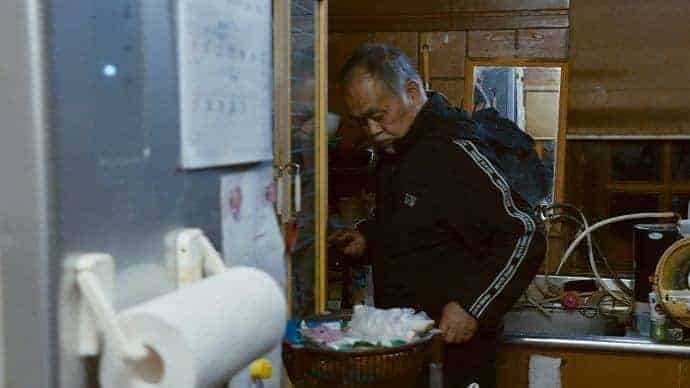
For the purpose of re-creating parts of the film history, the director has created films in film, and the scenes from the pretend B-production of a fabulously titled “Prehistoric Space Monster Gamogedorah” with the young Terawaki are an irresistible watch. Equally funny are the explanations about why that particular film was never released along with a couple of others for the incredibly similar reasons.
Most of the mishaps are happening during the filming of the TV drama “The Claws of Edo” with Yamamoto as the samurai Hanshiro and Riho Miaki (real name Riho Kotani, known as the member of the Yoshimotozaka46, and previously in the girl band NMB48) playing his love interest. While they are dialoguing as a samurai and his lady normally do” , Haginoya and the Lark PR manager and occasional extra Nadamine act as husband and wife pounding the straw, and those who are acquainted with the Japanese culture, will maybe recognize the face of the Tokyo-based musician Kakushin Tomoyoshi, who's specialized in traditional music and performing art of medieval Japan, as their folks art advisor on the set.
Another fabulous detail is the appearance of “the comedienne” Kazuko Kurosawa who reminiscences her past in the Lark agency and her job as an extra in “a Kurosawa film”. The daughter of the legendary Japanese director is a costume designer who, among other, was responsible for costumes in Hirokazu Koreda's “Shoplifters” (2018) or Takashi Miike's “Hara-Kiri: A Death of a Samurai” (2011).
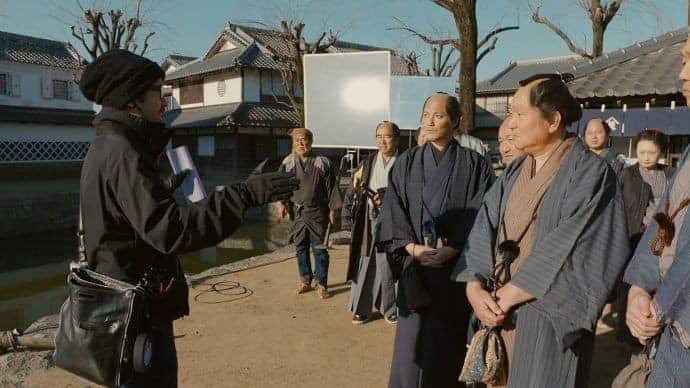
And because the story wouldn't be complete without a mythological creature, there is Ogamo, the Great Duck or a bird monster which gets discovered in a footage of the arrest caught by the drone on the set of “The Claws of Edo”. The complete story of Ogamo is then told by the “head priest” Joshin Yamaguchi of the Hotokuji temple, and the “historian and writer” Hiroshi Aramata (otherwise a famous Japanese author, polymath, critic, translator and specialist in natural history, iconography and cartography) who on his visit to a small temple in the mountains of Ibaraki saw a scroll that depicts a bird similar to this. The Chinese called the same bird Zhen, and they believed it secreted poison in its feathers. According to Arimata, the Chinese would use that poison to kill their enemies. Thanks to this discovery, it was decided to remake “Prehistoric Space Monster Gamogedorah”. In which Hagimoya finally gets the role of a fireman.


